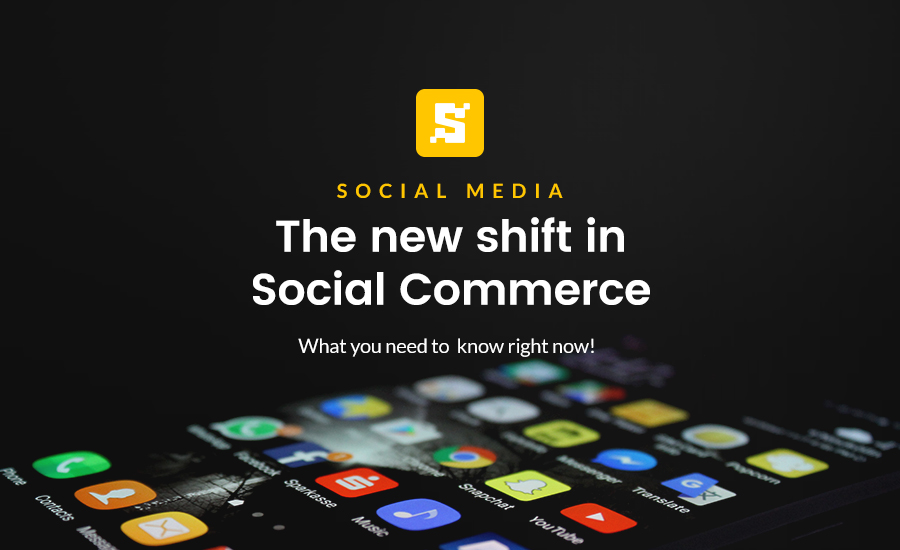You’ve probably heard the term social commerce thrown around over the last year or two. Social commerce is becoming increasingly relevant for businesses that want to reach and acquire more customers online. After all, the average person spends more than two hours a day on social media.
What is social commerce?
The simple definition of social commerce is when a product transaction happens for a third-party website entirely within a social media platform. The social media experience drives the purchasing process, from start to finish. For example, the user finds the product on Facebook and they purchase it there as well. It’s literally a one-stop shop.
Social commerce is happening everywhere: Facebook, Twitter and even Snapchat to name a few. More and more companies are opting to place the customer buying journey directly on social platforms, because that’s where their customers are and where the competition is headed. And on top of that, 63 percent of 18- to 34-year-olds believe that social media is the most effective way to advertise to them, which is no surprise, given that nearly all millennials are active on social media in some form.
The rise of the social shopper
Social shopping is nothing new, and its gradual introduction into the ecomm industry is something marketers need to to pay attention to. Facebook is the giant in the social commerce scene, but there is an increase in consumer activity across all platforms.
Pinterest and Snapchat, for instance, should not be overlooked as the trend picks up. Eighty-seven percent of Pinners have purchased a product because of Pinterest and Snapchat is upping its social commerce game with new ad features to promote in-app commerce. Instagram, too, is gaining ground.
How businesses benefit from social commerce
Retailers are shifting to social commerce because of the infinite possibilities it offers. Because people are on social media daily, it’s advantageous to guide consumers through a product journey directly on social platforms. Here are the positive effects this kind of marketing tactic has on ecomm:
Boost trust and customer loyalty
Social commerce is more than a tool to increase sales. It’s also a tool to build customer relationships. If you’re creating meaningful journeys for your customers and engaging with them along the way, you increase the chances to acquire more loyal customers and build retention.
Quick tip: A proven strategy to engage your customers is to implement a reward system, such as a mobile loyalty app, and enhance these efforts by offering additional ways to interact with and reward your customers.
Increase authentic website traffic
It may be the more obvious benefit, but it’s worth mentioning. Upping your social commerce game means increasing authentic visits to your site. According to eMarketer, the majority of people on social media use it to make purchasing decisions and often later buy directly on the brand’s website.
ROI tools at your disposal
Tracking return on investment can be tricky without the proper knowledge and tools. With native social media, however, you have access to all the right tools you need to measure performance and tie it back to revenue. Social media services can also offer expert insights to deliver results for your e-commerce business.
Scaled word-of-mouth marketing
Word-of-mouth marketing (WOMM) is the most valuable tool for brands, but on social media, that strategy is on a much larger scale. Potential buyers look for trustworthy brands and there’s no better place to gauge reputation than online. Social commerce encourages WOMM, but on a virtual, global scale through online reviews and engagement metrics that can strengthen your brand’s reputation.
Strengthen customer satisfaction
Social commerce improves the customer experience, which directly affects customer satisfaction. This seamless experience on social media means fewer forms and bouncing from page to page during the checkout process. Paying on social media has become a smooth process with integrations like PayPal and Apple Pay, among others.
Getting social with commerce
People are glued to social media daily, and new users are always on the rise. Jumping on the social commerce train could be the difference between improving customer acquisition or missing out on valuable customers. As more brands shift to adding social buying buttons, a seamless social commerce experience is on its way. With commerce moving to social, it’s not enough to only have an e-commerce website with no social driver behind it.








